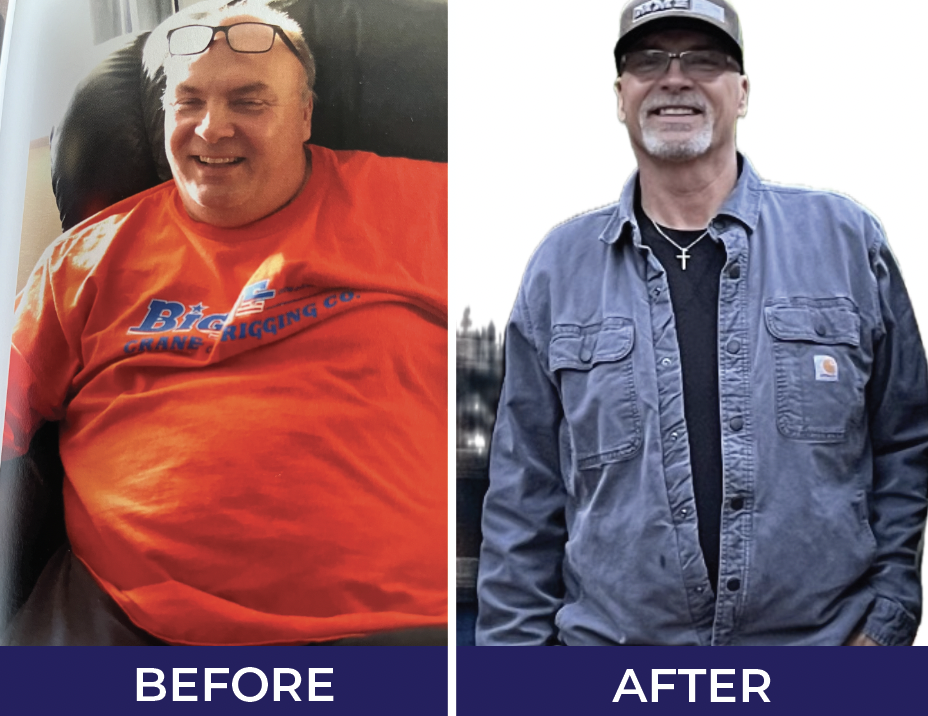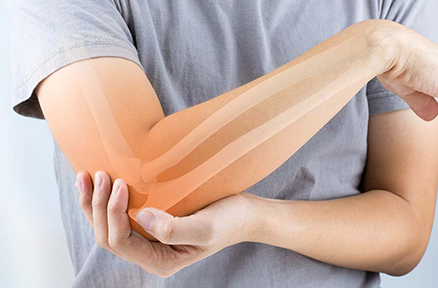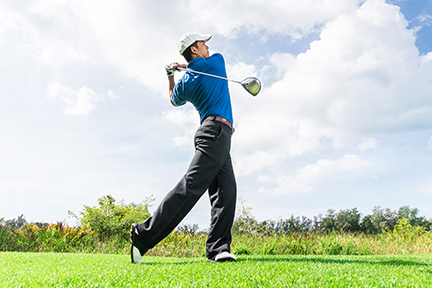Strong, healthy bones are vital to our well-being and something everyone should pay attention to, not just “older people”
Healthy, good bones keep us standing tall. They protect our organs and hold our muscles in place. Bones store calcium and send it to other parts of the body when needed.
But like sunny days in California and stores that are open 24/7, we take bones for granted.
And that can be dangerous.
As we age, our bones don’t grow or repair themselves as quickly as they used to. About 10 million Americans have osteoporosis, a disease that weakens bones and increases risk for fractures. According to the National Osteoporosis Foundation, 1 in 2 women and up to 1 in 4 men over age 50 will break a bone due to osteoporosis.
Genetics play a large role in our bone health. But you can’t blame your mom and dad for it all. Your own diet, exercise, and other lifestyle choices affect the strength of your bones, too.
If you want to stay healthy, mobile and fracture-free, you need to start taking care of your bones now, whatever your age.
We can assess your bones and decide how to slow down bone loss and build density if necessary.
Aren’t older people the only ones who need to worry about bone health?
It’s true that the older you are, the more vulnerable you are to bone problems. When we’re young, we build new bone faster than we break it down. Most of us reach our peak bone mass by about age 30, according to the National Institutes of Health. After that, we begin losing bone mass faster than we rebuild it.
It is important to develop as much bone mass as you can before age 30. The more you have, the slower you are to likely lose bone mass and therefore bone strength.
Puberty is a crucial time for developing bone mass. It’s the stage when women create half of their calcium stores and men make up to two-thirds of theirs, according to the American Academy of Orthopedic Surgeons. Men have about 50 percent more body calcium than women when puberty is over and continue to have stronger bones throughout their lives.
Menopause is particularly hard on women. Estrogen protects bones by helping the body absorb calcium. When estrogen levels drop during menopause, bone loss occurs more quickly. Weaker bones lead to more fractures and an increased risk for osteoporosis, which is much more common in women than men.
About 1 in 4 women aged 65 and over will be diagnosed with osteoporosis, according to the Centers for Disease Control and Prevention. Just 1 in 17 men aged 65 and over will develop the disease.
Top ways to build good bones and slow bone loss
Bad health habits and a couch potato lifestyle don’t do your bones any favors. Develop healthy habits now. It’s never too late.
Eat a healthy diet, rich in calcium and vitamin D
Think of your bones as the United States Mint of the body. Instead of money, they store calcium. And when the body needs more calcium, it makes a withdrawal from the bones. As we age and our bones don’t restore as quickly, that can be a problem.
To build those calcium stores, add calcium-rich foods to your diet: dairy products, almonds, green, leafy vegetables like broccoli and kale, salmon, sardines and soy products.
At the same time, make sure you’re getting enough vitamin D, which helps the body absorb calcium. Good sources of vitamin D include egg yolks, fortified milk, and oily fish such as tuna and sardines. Don’t forget to get out in the sunshine for a healthy dose of vitamin D.
How much calcium and vitamin D you need depends on your age. The older you are, the more you need. Sometimes it’s hard to get a sufficient amount of either in our diet. Adolescents, postmenopausal women, men over age 70 and others may require a calcium supplement.
Most of us would also benefit from a vitamin D supplement. The American Academy of Pediatrics has recognized that most children don’t get nearly enough of the vitamin from their diets or sunlight and recommends supplements.
Exercise for good bones
Physical activity isn’t just good for your heart. It’s vital to maintaining strong bones.
Remember that bones are living tissue. When you exert force on them – with things like jumping, running or other weight-bearing exercise – your bone builds more cells and becomes denser.
Since the teen years are the time of fastest bone growth, it’s especially important for adolescents to exercise.
While physical activity won’t increase bone mass for the elderly, they shouldn’t drop the barbells just yet. Exercising four or five days a week can:
- Slow bone loss
- Build muscles to strengthen bone
- Improve balance and coordination to reduce falls and fractures.
We recommend a combination of these exercises.
- Weight-bearing includes any exercise where you’re on your feet and working against gravity, such as walking, jogging, volleyball or jump roping.
- Resistance, using bands or weights, strengthens muscles and builds good bones.
- Flexibility through stretching and yoga may not build bones, but it does lead to healthier joints and fewer injuries.
These activities may not be appropriate for you. We at Golden State Orthopedics & Spine are happy to talk with you about how to adopt an exercise regimen that works for you.
Put down the cigarettes and alcohol
Studies have shown that smoking and drinking are related to poor bone health.
Heavy smoking has been associated with increased risk for osteoporosis, fractures and lower bone density. It’s unclear how moderate or light smoking affects bone health. Smokers have a higher risk of osteoporosis, but it could be because they’re usually thinner, exercise less, drink more alcohol and may have poor diets – all risk factors for osteoporosis.
How alcohol affects bone health can be just as murky. We know that alcohol can inhibit the absorption of calcium and that those who abuse alcohol have more fractures and slower bone healing. But no one is sure why.
This has serious implications for teens and young adults, who have a propensity to binge drink at a time in their lives when it’s critical for them to build calcium stores and bone density.
Even though no one is sure what the tipping point is when it comes to how many cigarettes or how much alcohol adversely affects bone health, there is no question that they have detrimental effects on your overall health. If you stop smoking and drink only in moderation, your body – and your bones – will thank you for it.
Discuss bone health with your doctor
Some people just don’t have good bone metabolism, which is how we rebuild healthy bones. Diet and exercise can help, but healthy habits won’t completely offset bad genes.
Your primary care physician or an orthopedist can evaluate your family history and other risk factors like hormonal disorders, long-term use of corticosteroid or other medications, and weight. They all affect bone health.
If you are at risk of developing osteoporosis, I might suggest bone metabolism testing or a bone density scan. The U.S. Department of Health and Human Services recommends screening tests for all women age 65 or older and for women younger than 65 who are at higher risk for bone fractures.
The most common test is a DEXA scan, which is an X-ray of the spine and hip.
Once we assess your rate of bone loss, we can decide whether to prescribe medications that can slow it down and build bone density.
Your bone health is in your hands
So many of us are obsessed about wrinkles and saggy skin as we age. But we should be just as obsessed with how our insides look.
Our bones do a lot of the heavy lifting for our bodies. If we want them to be as healthy as they can so we can have the healthiest life we can, act now.
Adopt healthy habits – and never take those bones for granted.



